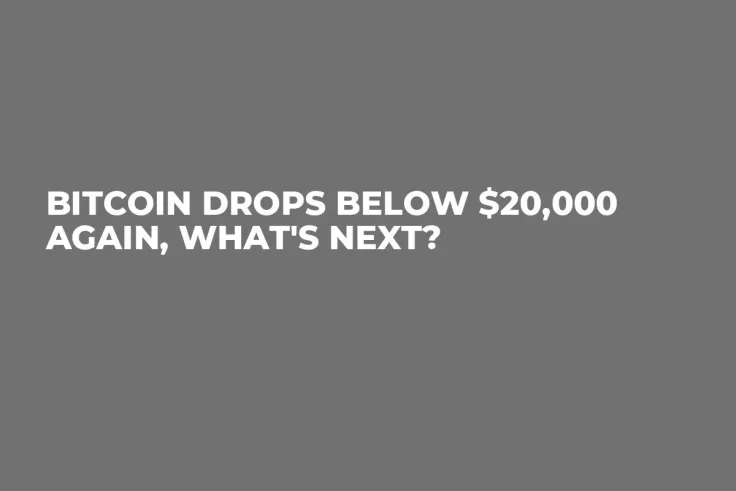
Disclaimer: The opinions expressed by our writers are their own and do not represent the views of U.Today. The financial and market information provided on U.Today is intended for informational purposes only. U.Today is not liable for any financial losses incurred while trading cryptocurrencies. Conduct your own research by contacting financial experts before making any investment decisions. We believe that all content is accurate as of the date of publication, but certain offers mentioned may no longer be available.
Bitcoin has lost the battle against bears and plunged below $20,000 once again, destroying the hopes and beliefs of investors who thought that the new rally had already started and that Bitcoin is now going to run toward the previous ATH.
In today's trading session, Bitcoin briefly dropped below $20,000 but then returned above $20,000 and is now consolidating at the support level. Unfortunately, there is not much of a volume on the trading pair, suggesting that investors and traders are not yet ready to support another rally, not short the digital gold.
Positive scenario
The sudden return of buying power on the market is unlikely to happen without significant drivers on the traditional financial market, which means that Bitcoin will rally only with the help of retail investors and whales.
While Bitcoin is aiming at the further plunge to the local support level of $18,800, the market should not be worried too much as a small double top chart pattern may become a foundation for another rally.
Negative scenario
With the drop below the $18,800 support level, we might see a spike in selling pressure caused by traders who grabbed some cheap BTC around the mentioned price, as they would most likely prefer breaking even on their position or selling at a slight loss.
Because of the absence of inflows on the market, additional pressure on BTC could lead to a catastrophic price drop and expose investors to even higher risks.
As for now, the volatility on the cryptocurrency market remains low.

 Arman Shirinyan
Arman Shirinyan Alex Dovbnya
Alex Dovbnya Caroline Amosun
Caroline Amosun Dan Burgin
Dan Burgin